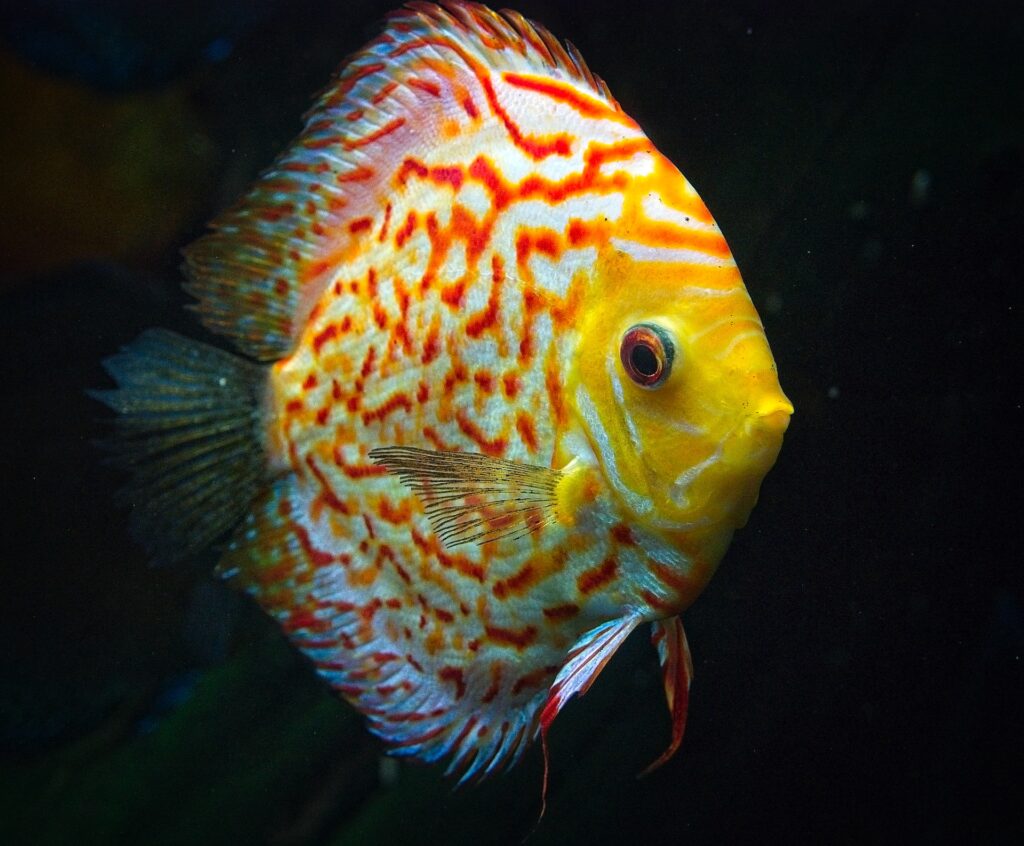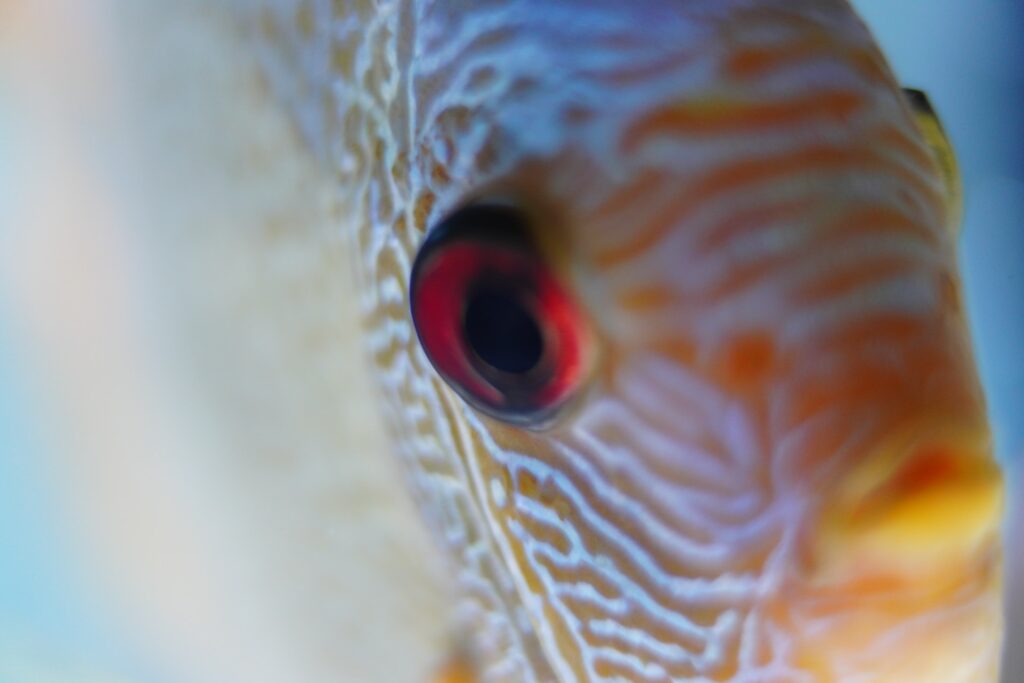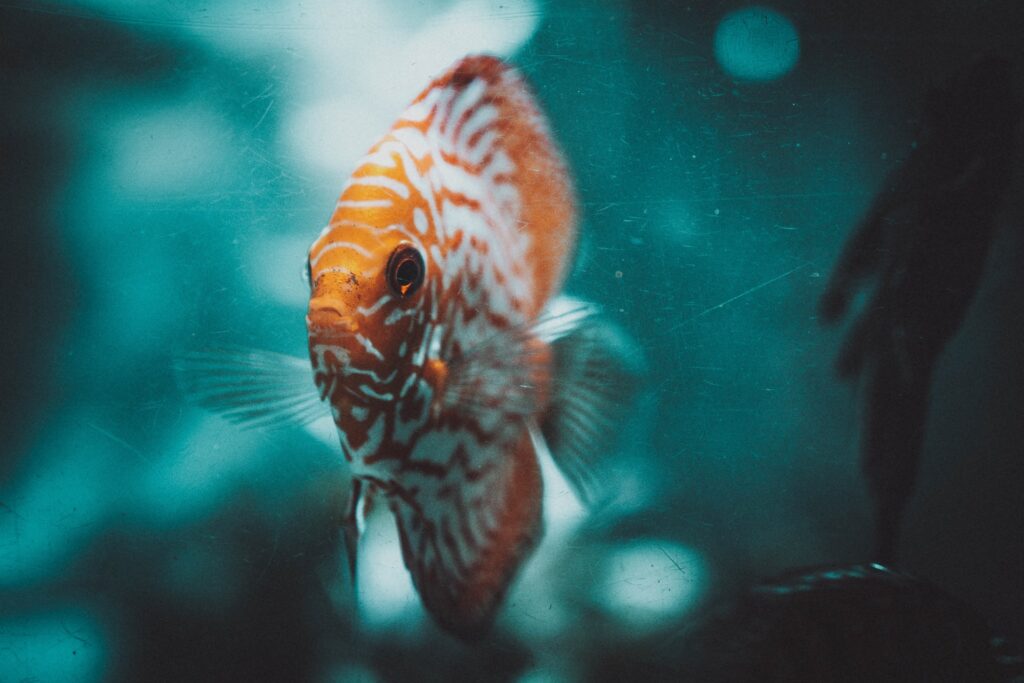
In the enchanting world of tropical freshwater aquariums, few fish species rival the Discus fish when it comes to sheer beauty and elegance. Renowned for their vibrant colors, intricate patterns, and graceful swimming, Discus fish are a favorite among aquarists. Among the various varieties and color morphs of Discus, some stand out as the most stunning and sought-after. In this article, we’ll dive into the realm of aquatic artistry and explore the top 10 most gorgeous Discus fish in the world, each a living masterpiece in its own right.
1. Red Turquoise Discus (Symphysodon aequifasciatus)
The Red Turquoise Discus is a true work of art, combining rich, fiery red hues with striking turquoise markings. Its stunning contrast and vibrant colors make it a perennial favorite among Discus enthusiasts. The distinct red and turquoise coloration is both bold and graceful, creating a fish that commands attention in any aquarium.
2. Blue Diamond Discus (Symphysodon aequifasciatus)
The Blue Diamond Discus is a vision of ethereal beauty. Its deep blue body is adorned with shimmering diamond-shaped patterns, reminiscent of precious gemstones. This variety exudes a sense of regal elegance, making it a cherished addition to any Discus collection.
3. Checkerboard Discus (Symphysodon aequifasciatus)
As its name suggests, the Checkerboard Discus boasts a mesmerizing black and white checkerboard pattern across its body. The precision and symmetry of these squares create a visually striking contrast. This Discus variety is a testament to the artistry of selective breeding.
4. Pigeon Blood Discus (Symphysodon aequifasciatus)
The Pigeon Blood Discus is a living masterpiece of deep, intense red coloration. Its rich, velvety red hue is often compared to the beauty of a pigeon’s blood, hence the name. With its bold, monochromatic appearance, this Discus variety exudes a sense of timeless elegance.
5. Albino Discus (Symphysodon aequifasciatus)
Albino Discus fish are characterized by their lack of pigmentation, resulting in a unique and almost translucent appearance. Their soft pinkish body and bright red eyes create a captivating contrast. These albino variants are a testament to the diversity within the Discus world.
6. Leopard Skin Discus (Symphysodon aequifasciatus)
The Leopard Skin Discus is a true marvel of nature. Its body is adorned with a mesmerizing pattern that closely resembles the spots of a leopard. This intricate and captivating design adds a sense of mystery and allure to these fish.
7. Royal Blue Discus (Symphysodon aequifasciatus)
The Royal Blue Discus is aptly named, as it showcases a deep and majestic shade of blue across its body. The uniformity of its coloration, combined with its graceful form, evokes a sense of royalty and elegance.
8. Red Marlboro Discus (Symphysodon discus)
The Red Marlboro Discus is celebrated for its brilliant red coloration, which radiates warmth and vibrancy. Its red hue extends from its head to its tail, creating a captivating and harmonious appearance.
9. Snakeskin Discus (Symphysodon aequifasciatus)
The Snakeskin Discus is known for its labyrinthine pattern, resembling the scales of a snake. This intricate and mesmerizing design adds an element of mystery and sophistication to the fish, making it a favorite among Discus connoisseurs.
10. Cobalt Blue Discus (Symphysodon discus)
The Cobalt Blue Discus showcases a stunning, deep blue coloration that is both rich and soothing to the eye. Its simple yet striking appearance captures the essence of elegance and beauty.
A Harmonious Aquarium Ecosystem
While the allure of these gorgeous Discus fish is undeniable, it’s essential to create a harmonious aquarium ecosystem that caters to their specific needs. Providing optimal water quality, suitable tank conditions, and a balanced diet is crucial to ensure the well-being of these living works of art.
Optimal Tank Conditions for Discus Fish
- Tank Size: A spacious tank is essential for Discus, as they thrive in groups and require ample swimming space. A tank of at least 55 gallons is recommended for a small group of Discus.
- Water Parameters: Discus prefer warm, soft, and slightly acidic water conditions. A temperature range of 82-88°F (28-31°C), a pH level of 6.0-7.0, and very low hardness are ideal for their well-being.
- Filtration: High-quality filtration is crucial to maintain clean water. Canister filters or sponge filters are often preferred to minimize water flow, as Discus are not strong swimmers.
- Tank Décor: Discus appreciate a well-planted aquarium with plenty of hiding spots among driftwood and plants. The natural environment should resemble their Amazonian habitat.
- Lighting: Moderate lighting is preferred, as Discus originate from dimly lit waters. Use subdued lighting to mimic the dappled sunlight of the Amazon rainforest.
- Water Changes: Regular water changes are a must to maintain pristine water quality


